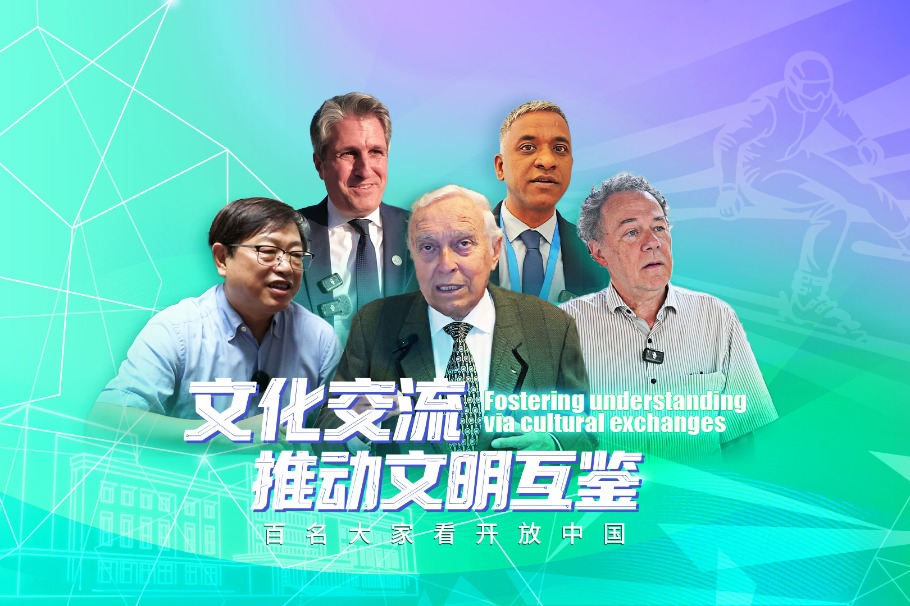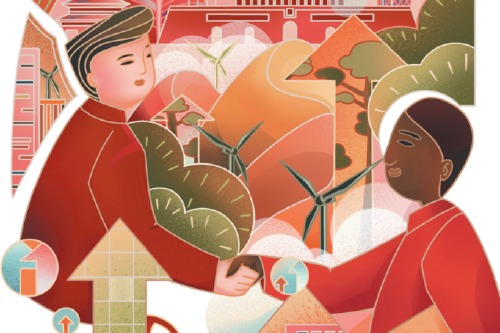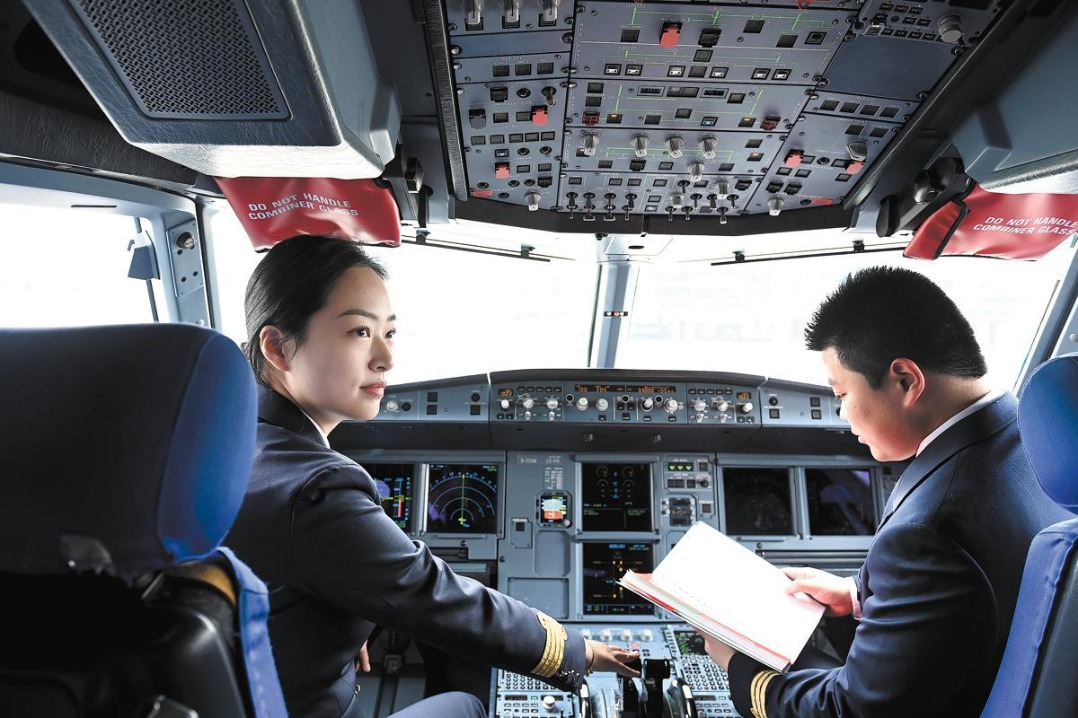Pep talk


WANG XIAOYING/CHINA DAILY
China and Europe can stabilize their own partnership and the global economy by enhancing dialogue amid differences
The current global economic order is undergoing profound restructuring. Europe finds itself increasingly passive in its policy toward the United States and inconsistent in its approach toward China. This stems from a complex web of internal and external constraints, which predicate the pragmatic effort by Europe to preserve its own model while adjusting to unfavorable global structural trends.
Europe is a concentrated zone of advanced industrial economies. Western European countries serve as the engine of the European economy, providing the cohesion that drives European integration and the European Union's eastward expansion. This "core region" holds global competitive advantages in numerous traditional industries, including high — and mid-tier industrial goods such as automobiles, machinery, pharmaceuticals, instruments, chemicals and paper products; luxury consumer goods such as food, luggage and cosmetics; and cultural and scenic experience products. As the most integrated regional economy in the world, Europe's industrial structure leverages complementary strengths across Europe. Western Europe remains the economic center and industrial high ground, maintaining global competitive advantages in high-value-added industries and their core technologies. Meanwhile, the manufacturing segments of these leading industries have been relocated within the EU, creating significant employment opportunities for new EU member states and preserving the integrity of these production chains.
Since the end of World War II, Western Europe has aligned with the US-led world order, maintaining a secondary position in terms of technology and markets, while enjoying high returns. Within this order, Europe has traded autonomy — particularly in security, technology, and energy — for lower defense spending. Paradoxically, this condition has advanced regional integration, and helped establish a European model that is particularly attractive to developing countries. However, after the US launched its "America First" policy and the interdependence of the global industrial system became increasingly weaponized, Europe's economic advantages are facing pressure from multiple sides.
First, heavy dependence on the US in energy and cutting-edge technologies leaves Europe vulnerable to US trade and investment policies, leading to shrinking profit margins and the outflow of industries with upgrading potential.
Second, European countries lack competitive advantages in emerging high-value-added industries such as the platform economy and artificial intelligence, as well as in low-value-added sectors such as consumer goods and food service industries. Their domestic markets are largely dominated by US and Chinese companies.
Third, the global market share of Europe's traditional advantageous industries is also being squeezed. For instance, after the pandemic, global downgrading in consumption has dealt a devastating blow to the luxury goods industry; in developing markets, electric vehicles are rapidly replacing gasoline-powered cars.
Due to economic decline and financial difficulties, anti-immigration and anti-globalization political platforms have gained increasing public support in the "Alpine-ring" core of Europe. In Western Europe, Italy and Belgium are already governed by parties that advocate such positions. In Germany, France, Austria and Portugal, such parties have become the largest opposition forces. Traditional mainstream parties are facing sustained and profound challenges. To maintain electoral support, they have increasingly compromised on policy.
The momentum of European integration has stalled as the cohesion provided by the Western European economic engine weakens. Central and Eastern European countries are seeking independent economic paths. The general public in Western Europe is largely opposed to continuing the transfer of powers to the EU, and Brexit has set a precedent for separation.
During his second term, Donald Trump has revived his "America First" strategy, using sharply increased tariffs to pressure countries into renegotiating trade deals. Trump does not treat the EU differently due to the potential "long-term benefits" of US-Europe strategic cooperation, but instead is leveraging the EU's dependence on the US in areas such as exports, technology, finance, security, defense and strategy to exert pressure on the bloc. Under multiple constraining factors, the EU has been unable to employ anti-coercion tools to compete with the US, and instead it has chosen to prioritize protecting the interests of long-supply-chain industries such as the automotive sector, accepting conditions including US tariffs, investment demands and increased imports of energy and agricultural products.
Although the EU has not fully followed the Trump administration's lead, it has introduced new rules outside the World Trade Organization framework and raised trade barriers. Key tools in this new policy aim to restrict Chinese products from entering European markets. For instance, the EU has imposed punitive measures on Chinese goods, pressuring Chinese supply chains to relocate to other developing countries, and reducing dependence on China. Additionally, the bloc is raising standards on environmental and human rights issues, particularly in relation to its trade and investment relationship with China, and attaching conditions to its stance on China-related international affairs. These measures aim to delay the impact of Chinese products on European markets.
Overall, Europe's passivity in its policy toward the US and inconsistency toward China reflect not only its external dependencies in global supply chains, energy systems, and security architecture, but also the inevitable consequences of internal economic weakness and social fragmentation. Although Europe seeks to regain the strategic initiative through the reshaping of trade rules, serious doubts remain about whether its industrial strengths, technological capabilities, and level of political consensus are sufficient to realize this strategic vision.
For China, rationally recognizing the complexity of European policies and maintaining strategic resolve and institutional confidence remain crucial. Amid the sweeping changes in the global economic landscape, China's commitment to high-level opening up and its advancement of green transformation and technological innovation will not only enhance the resilience of its own development, but also create greater potential for practical cooperation in China-EU relations. If China and Europe can enhance dialogue amid differences and promote mutual gains amid competition, they may still provide a stabilizing force for the turbulent global economy.
The author is a research fellow at the Institute of Political Science at the Chinese Academy of Social Sciences. The author contributed this article to China Watch, a think tank powered by China Daily. The views do not necessarily reflect those of China Daily.
Contact the editor at editor@chinawatch.cn.


































